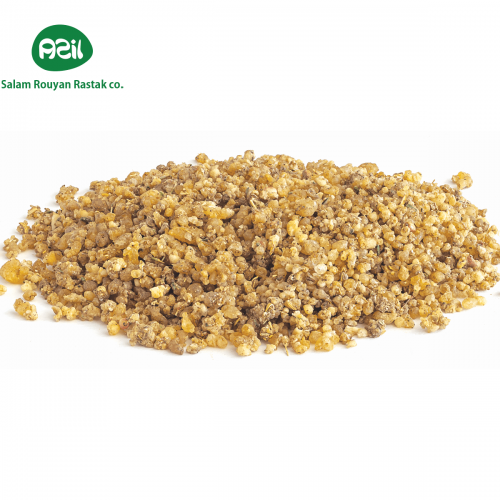Azil Organic Asafoetida Gum
- Botanical name : Ferula Gabrielli Rech. f.
- Asafoetida is an oleo gum obtained from the roots of Ferula Assa-foetida L.
- Azil organic can supply customers with this gum in two dried and semi-dried forms and with the high quality in order to meet the needs of food, industrial, and pharmaceutical industries.
Type : Organic & conventional
Azil Organic asafoetida gum
Asafoetida is the dried latex (gum oleoresin) exuded from the rhizome or tap root of several species
of Ferula (F. foetida and F. assa-foetida), perennial herbs growing 1 to 1.5 m (3.3 to 4.9 ft) tall.
Packaging Information
| Harvest period : | Second week of May |
| Harvest method : | Manual |
| Packaging : | |
| Bulks ( Each carton ) : | |
| Retails : | |
| Number of boxes per cartons : | |
| Number of cartons per pallets : |
They are part of the celery family, Umbelliferae.
Notably, asafoetida gum is thought to be in the same genus as silphium, a North African plant now believed to be extinct,
and was used as a cheaper substitute for that historically important herb from classical antiquity.
The species are native to the deserts of Iran and mountains of Afghanistan where substantial amounts are grown.
asafoetida has a pungent smell, lending it the trivial name of stinking gum,
but in cooked dishes it delivers a smooth flavour reminiscent of leeks or other onion relatives.
asafoetida gum
Asafoetida is also known variously as “food of the devils”,
“devil’s dung”, javoneh-i badian, hing, hengu, inguva, kayam, and ting.
Asafoetida was familiar in the early Mediterranean, having come by land across Iran.
It is generally not forgotten now in Europe, and still widely used in India.
Read More: Azil Organic Ammoniacum Gum
It emerged into Europe from an expedition of Alexander the Great,
who, after returning from a trip to northeastern ancient Persia,
thought they had found a plant almost identical to the famed silphium of Cyrene in North Africa—though less tasty.
Dioscorides, in the first century, wrote, “the Cyrenaic kind, even if one just tastes it,
at once arouses a humour throughout the body and has a very healthy aroma,
so that it is not noticed on the breath, or only a little;
but the Median [Iranian] is weaker in power and has a nastier smell.
“Nevertheless, it could be substituted for silphium in cooking, which was fortunate,
because a few decades after Dioscorides’ time, the true silphium of Cyrene became extinct,
and asafoetida became more popular amongst physicians, as well as cooks.
Reference: Wikipedia





